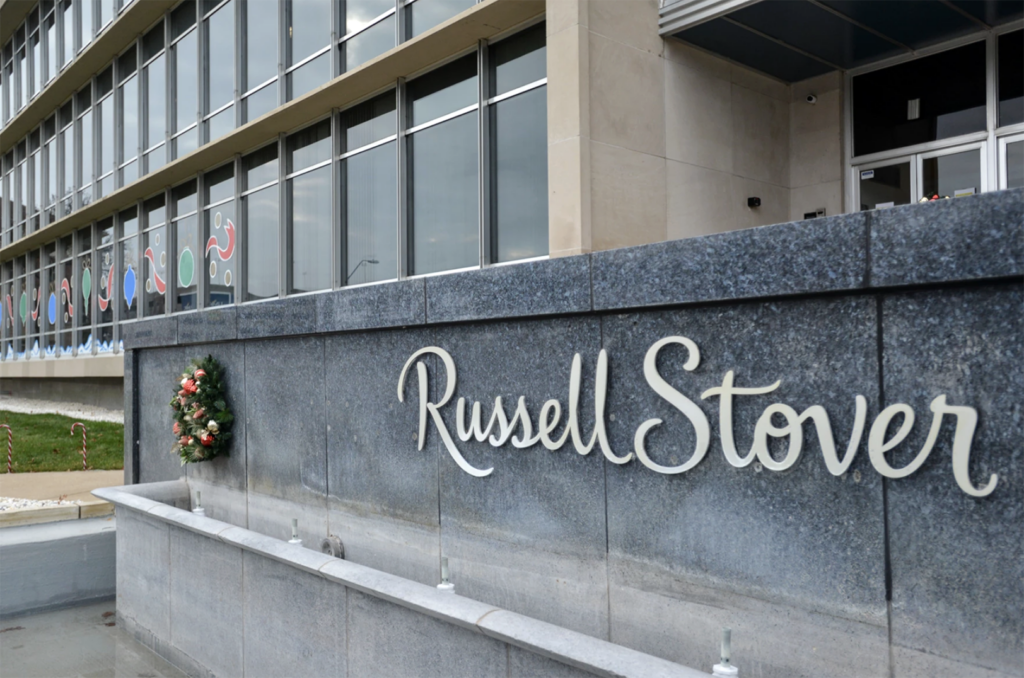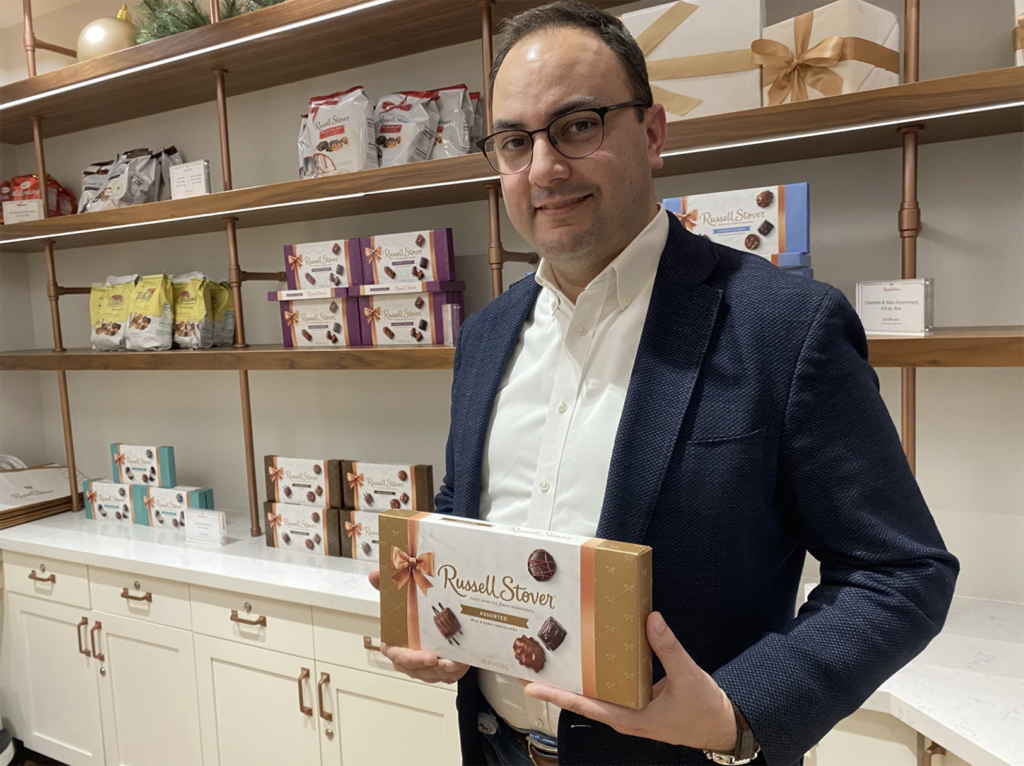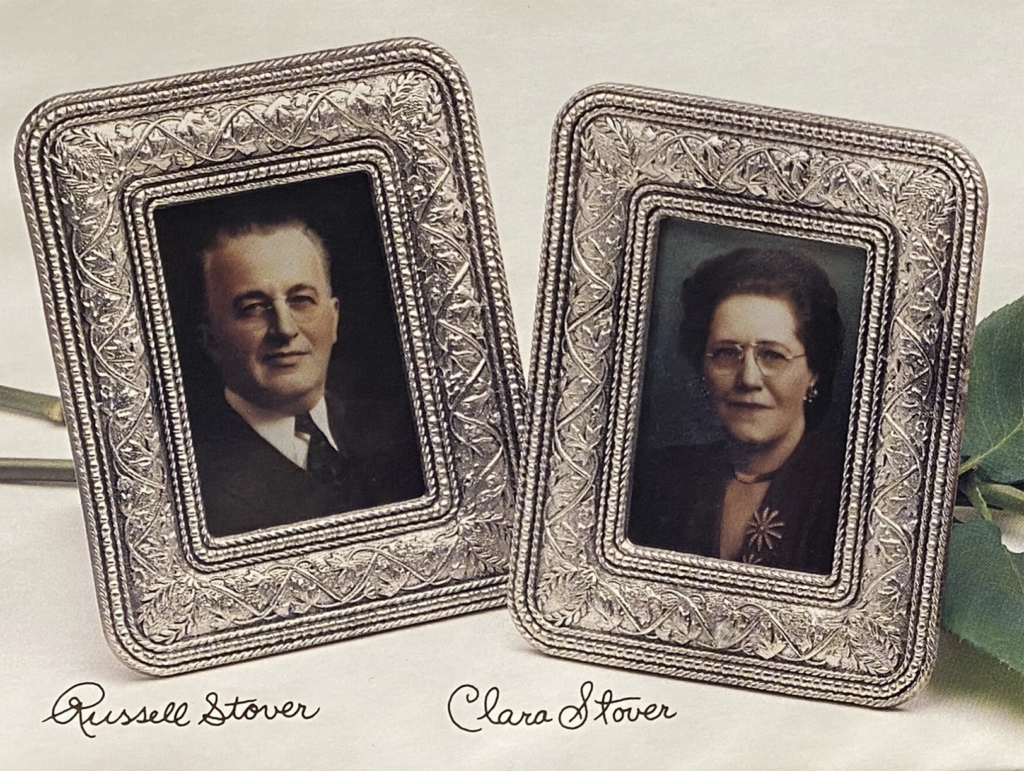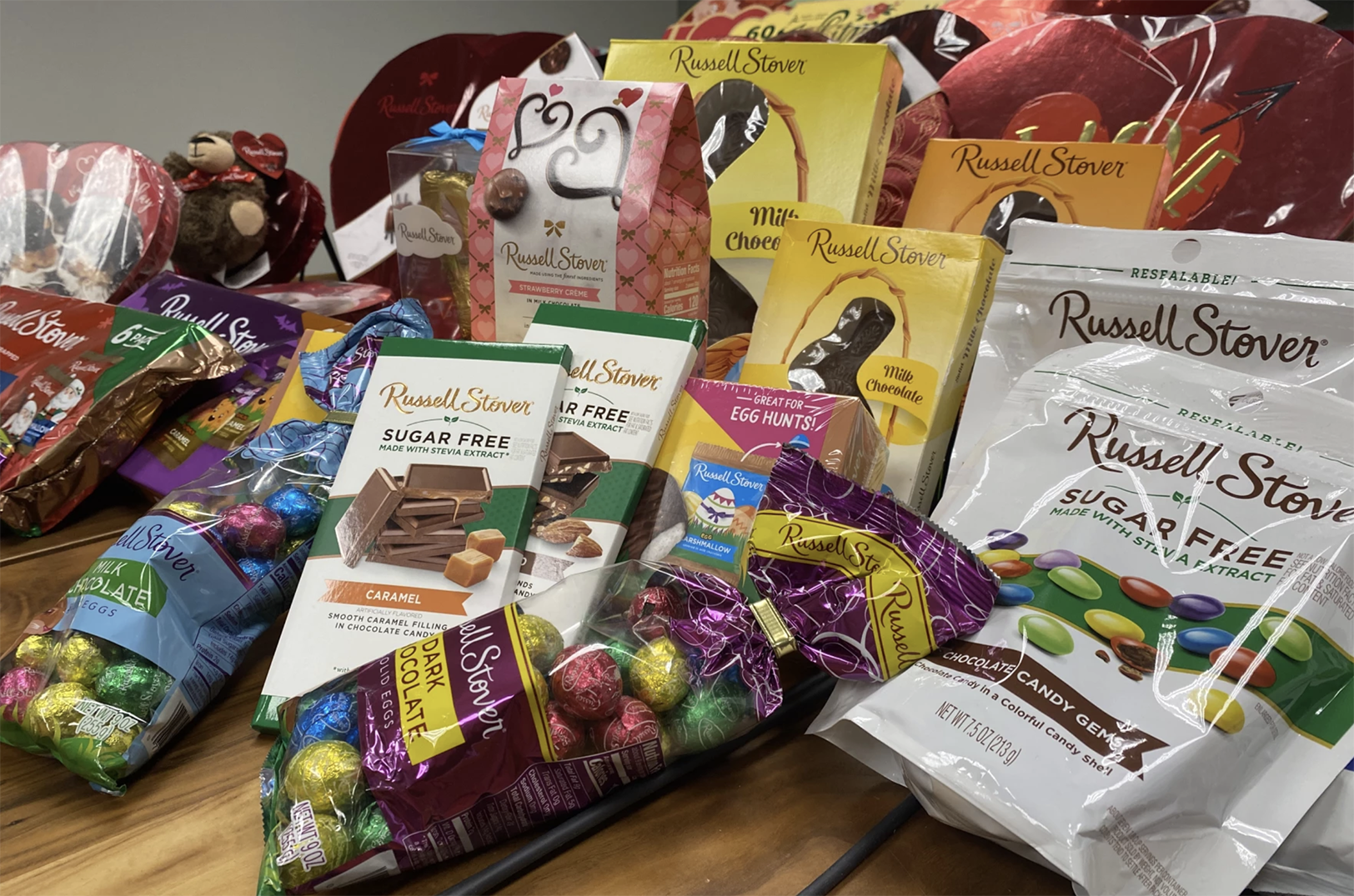Editor’s note: The following story was published by KCUR, Kansas City’s NPR member station, and a fellow member of the KC Media Collective. Click here to read the original story or here to sign up for KCUR’s email newsletter.
The iconic Kansas City-based company is still growing, and attributes its success to the warmth and comfort people feel when they open the box and see the same candies they got from their grandmother
Every Christmas, the seven O’Neill boys from Kansas City, Missouri, got a box of Russell Stover’s candy from their grandmother.
Neither the rectangular white box printed with the elaborate brown bow nor the flavors of each piece in a tiny brown paper cup ever changed. The boys weren’t allowed to use the map telling which candies were which flavor, so Patrick O’Neill, now 70 and the eldest, pulled rank and always picked first.
“Back off guys, I got the caramel,” he’d tell his brothers.
“But you had to find it first,” he remembers. “And in our house, every box of Russell Stover candies, you could tell what (a piece) was by just turning it over because everyone had already put a thumbnail in it to see.”
Russell Stover has been celebrating its 100th-anniversary this year, commemorating not only its longevity as an industry leader but a century of memories like O’Neill’s.

The Russell Stover building at Oak and Dr. Martin Luther King, Jr. Blvd. sits with holiday decorations adorning the front facade; photo by Carlos Moreno, KCUR 89.3
The company trades on nostalgia: the giddiness of receiving a box of Russell Stover’s as a gift, the wafting aroma of milk chocolate when you lift off the lid, even the comforting predictability of not knowing what chocolate you might select.
It was the likeness of a Russell Stover Gift Box that Forrest Gump philosophized over with the line, “My mama always said life was like a box of chocolates, you never know what you’re gonna get.” Actor Tom Hanks signed the prop from the 1994 movie, and Ripley’s Believe It or Not! bought it for $25,000 at an auction earlier this year.
Patrick Khattak, the company’s vice president of marketing, said the endearing scene captures Russell Stover’s brand.
“Nostalgia drives trust,” Khattak said. “There’s heritage, there’s memories, there’s feelings associated with the brand. Traditions with Russell Stover’s continue across generations.”

Patrick Khattak, vice president of marketing with Russell Stover’s Chocolates, holds one of the company’s most popular selections: traditional assorted chocolates; photo by Laura Ziegler, KCUR
From Eskimo Pies to candy
Company founder Russell Stover started working in the confectionery business in Chicago, Illinois, and Des Moines, Iowa, in the early 1900s.
As a chemistry student at University of Iowa, he was asked to help create an ice cream bar that wouldn’t melt when covered with chocolate. Stover licensed and patented the novelty, naming it The Eskimo Pie.
The treat was a hit, selling a million bars the first year and double the year after. Stover had multiple buyout offers, which he declined. Others soon created knock-offs and Eskimo Pie sales plummeted. Russell and his wife Clara eventually sold the company for meager profits.
Already schooled in candy-making, the Stovers relocated to Denver, Colorado, where they started making candy in their bungalow-style home. Not long after, they established “Mrs. Stover’s Bungalow Candies,” sprinkling a handful of retail stores across the Midwest.
In 1932,the Stovers moved all operations to Kansas City. Eleven years later, they changed the name to Russell Stover Candies.

Images of Russell and Clara Stover that appeared on a special box of Russell Stover’s candy celebrating the company founders; photo by Laura Ziegler, KCUR
An enduring treat
Christmas is the company’s highest-selling time of year, followed by Easter and then Valentine’s Day, according to Khattak.
“Roughly 40% of sales done for Valentine’s in the confectionery category is us,” he said. “The last week leading up to Valentine’s, a lot of men are procrastinators — we typically see a massive spike.”
The company also says it’s dominating in the sugar-free category. According to its annual report, Russell Stover claims 70% of the over $2 billion sugar-free market, serving the growing number of people who suffer from diabetes and obesity in the U.S. as well as the demand for weight loss products.
That’s still a fraction of overall sales, but as technology and chemistry improve the sugar-free flavors, Khattak said he expects that portfolio to grow.
While retail outlets have all but disappeared — there are just two in Kansas City — the candy is in just about every grocery and drug store chain nationwide. And it’s affordable.
“You’ve got some products out there, super premium products, artisanal stuff. But that’s not our soul,” Khattak said. “We want to be widely available to all consumers. We want everybody to be able to participate in the holidays.”

Boutique chocolatier Christopher Elbow is known for hand-painted and specialty chocolates with flavors from around the world; photo by Laura Ziegler, KCUR
Boutique chocolatiers
Some of that premium, artisanal stuff is represented in the cases at Christopher Elbow Chocolates, a small storefront at 18th and McGee in downtown Kansas City, Missouri. The boutique chocolatier features colorful, hand-painted bon bons in turquoise, rose and purple. Flavors include Rosemary or Vietnamese Cinnamon, Lavender and Ghana 68 percent.
Elbow represents a growing family of specialty chocolatiers who are moving away from mass-produced chocolate in favor of locally sourced, fair trade products from different regions of the world. Just like wine and coffee, cacao has different varietals.
“Some of them are really subtle, some are really fruity and bold,” Elbow said on a December afternoon at his small shop crowded with holiday shoppers.
“We’re actually sourcing beans from countries in Central and South America and Africa,” he said, “and creating really small batches of artisanal roasted beans and chocolate.”

The Russell Stover building at Oak and Dr. Martin Luther King, Jr. Blvd. sits with a banner celebrating a century of business; photo by Carlos Moreno, KCUR 89.3
Elbow opened this flagship store in 1993, and has since opened another one in San Francisco. About 40 fine food and department stores around the country carry his product.
But like so many others, Elbow feels nostalgic about Russell Stover’s candy. His own grandmother always had it around, he said. The company gave chocolate mass appeal, he said, and carved out a space for niche chocolatiers like him.
“I don’t think I would have the opportunity to do what I do today if it had not not been for them,” he said.
Russell Stover, purchased by Swiss candy conglomerate Lindt & Sprungli in 2014, saw growth of 10% last year, approaching a half billion dollars in sales. That’s a lot of chocolate Santas, bunnies and hearts.
“Russell Stover still maintains its DNA,” Khattak said. “It’s an iconic American brand. We’re true to quality products and to our assortment, so it hasn’t changed, at all.”






































